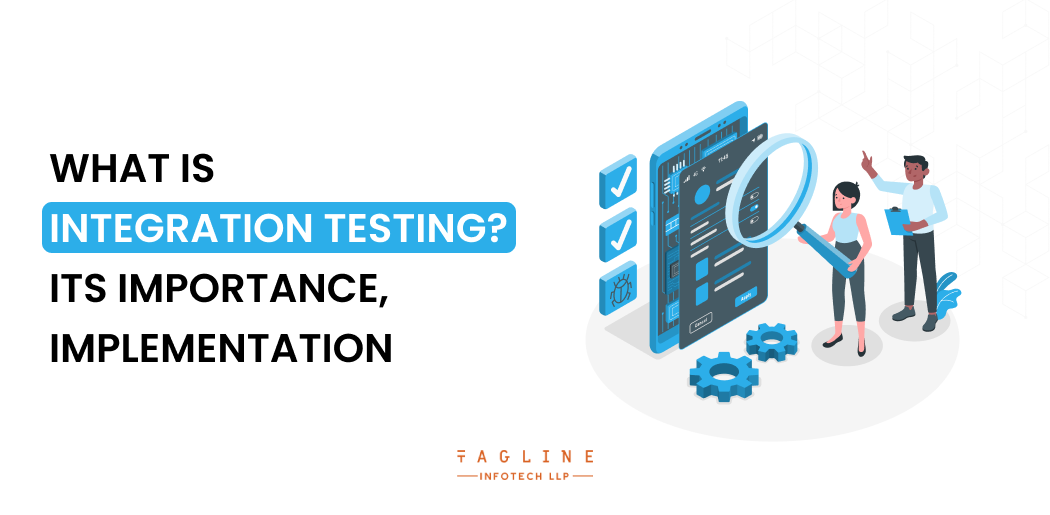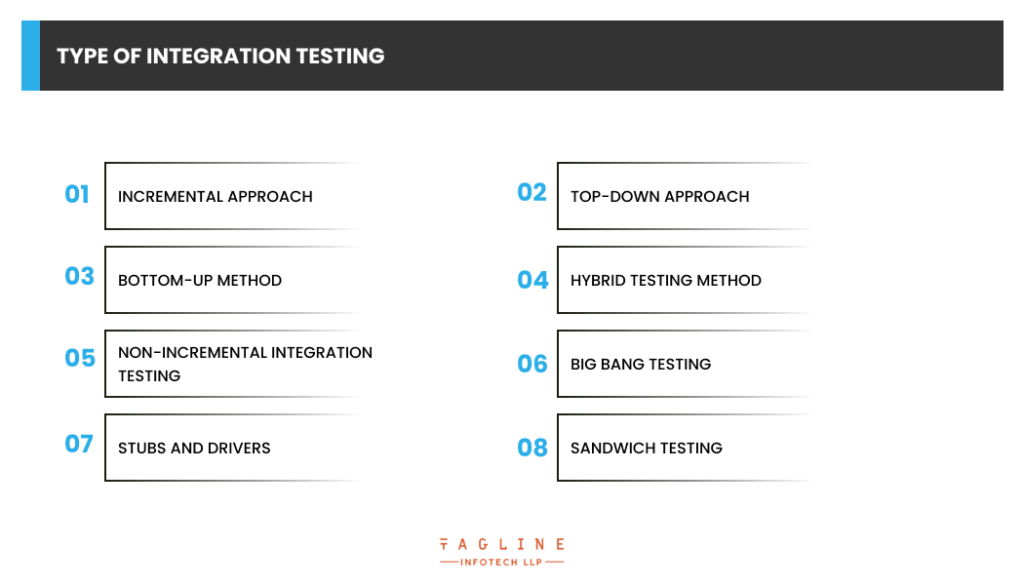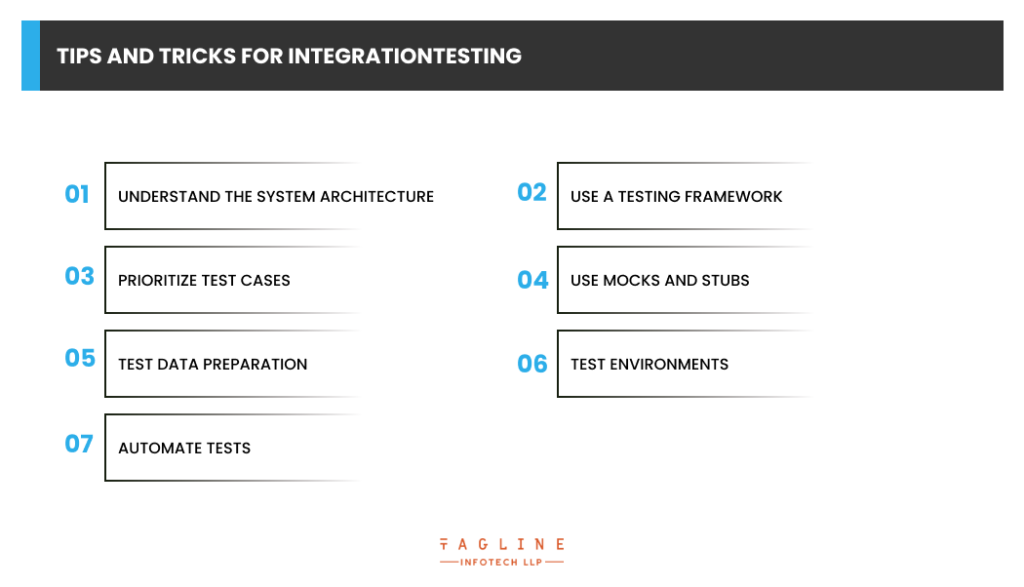A Guide on Data Visualization in ReactJS and...
May 15, 2024
Home >> Software >> What is Integration Testing? Its Importance, Implementation

Introduction
Any software release is preceded by significant testing, iteration, and further development. When testing new systems in software development, integration testing is merely one aspect of the functional testing process.
Functional testing is a quality assurance procedure that involves providing input and analysing the outcome.
Unit testing, integration testing, system testing, and user acceptability testing are the steps in the functional testing process.
They are intended to reveal any problems and evaluate the system’s and software applications’ performance.
You must mix third-party apps and internal modules within your programme to guarantee they perform flawlessly together. You must test the combination and assess the outcomes.
A payment gateway for an eCommerce site is a frequent example of such integration. The integration between the application under test (AUT) and the payment process must be thoroughly tested across all potential scenarios at every point where these features exchange data.
Examples of test cases include (but are not limited to):
This automated regression test might be used to build confidence in the system’s quality.
There are two types of integrative test:
Keep the following guidelines in mind when attempting this testing:
Maximize Your Business Potential with Precision Software Solutions!
Our skilled team of software developers crafts custom solutions that seamlessly align with your unique needs, enhancing productivity and driving profitability!
The Integration Test Case varies from other test cases in that it focuses on the interfaces and data/information flow between the components.
Priority should be given to integrating links rather than unit functions that have already been tested.
Integration Test Case Examples for the Following Scenario: The application comprises three modules: ‘Login Page,’ ‘Mailbox,’ and ‘Delete Emails,’ all of which are logically integrated.
Because it has already been done in Unit Testing, do not focus much on Login Page testing here. However, take note of how it is linked to the Mail Box Page.
Mail Box: Examine its connection with the Delete Mails Module.
| Test Case Objective | Test Case Description | Expected Result |
|---|---|---|
| Examine the interface connection between the Login and Mailbox modules. | Enter your login information and click the Login button. | must be directed to the Post Office |
| Examine the interface relationship between the Mailbox and the Delete Mails Module. | Select the email from Mailbox and click the delete option. | The selected email should be moved to the Deleted/Trash folder. |
In it, developers might employ a variety of standard software testing approaches. Here is a list of some of the most frequent approaches used in the field of software testing.
These approaches should not be confused with the forms of this testing discussed in the next section.
Also Read : Software Testing Life Cycle: 6 Phases, Best Practices & Strategies

Modules are introduced one at a time or based on need, according to the Incremental Approach. The selected modules must have a logical link.
In most cases, two or more modules are installed and checked to ensure that their functionalities function properly. Testing will continue until all modules have passed.In this sort of testing, the dependent modules have a strong link.
Consider two or more modules and see if the data flow between them is correct. You can try again by adding more modules.
Top-down testing entails testing higher-level modules using lower-level modules until all modules pass. Major design faults may be found and remedied early by testing essential components first.
The modules are added one by one, and the data flow is validated in the same sequence.
Bottom-to-up testing entails evaluating lower-level modules with higher-level modules until all modules pass.
When top-level important modules are checked last, a problem may develop, or we will add modules from bottom to top and examine the data flow in the same sequence.
Top-Down and Bottom-Up testing methodologies are blended in this strategy.
Top-level modules are tested with low-level modules, and low-level modules are tested alongside high-level modules. Each module interface is checked, reducing the possibility of a flaw.
We will utilise this strategy when the data flow is complicated and it is difficult to determine who is the parent and who is the kid.
In this scenario, we will add data in any module and then check to see if the data is present in all current modules. As a result, it is also known as the Big Bang approach.
In this method, all modules are merged at the same time for testing. Identifying faults in large software systems is more challenging, despite the fact that it is convenient for smaller software systems.
Testing can be conducted after all modules have been completed, therefore the testing team will have less time to complete this procedure, increasing the likelihood that internal interfaces and high-risk vital modules will be overlooked.
Stubs and drivers are fake programmes used in this testing to help with software testing. The programmes serve as stand-ins for missing models in testing.
They mimic data exchange with the caller module during testing rather of executing the whole programming logic.
Sandwich testing entails testing top-level modules with lower-level modules while lower-level components are integrated and evaluated as a whole.
Hybrid this testing is so named because it blends top-down and bottom-up methodologies. Drivers and stubs are both utilised.

Integration checking out is a critical section within the software program improvement lifecycle, where character additives or modules of a utility are examined collectively to make certain they paint seamlessly as an entire.
It helps identify troubles that may stand up when unique components of the software engage. Here are some recommendations and tricks for successful of this testing:
Integration trying out is an essential factor of software exceptional assurance, where the interplay among one-of-a-kind components is thoroughly examined to ensure the smooth operation of the entire gadget.
It plays a critical position in identifying and rectifying integration problems, consequently enhancing the general capability and reliability of software program programs.
By following pleasant practices, knowledge system structure, and utilising testing frameworks, you may effectively perform this testing and supply sturdy, mistakes-loose software programs. Hire Our expert Software developer that can help in Software Quality Testing to identify and resolve issues like bugs, glitches, and vulnerabilities and ensuring effective software performance.
Integration is necessary to make certain that one-of-a-kind parts of a software utility paintings collectively as supposed. It facilitates becoming aware of and coping with integration issues, preventing vital screw-ups and enhancing average machine reliability.
Some commonplace this testing strategies consist of black-container checking out, boundary cost evaluation, choice table method, white-container testing, and the use of stubs and drivers. These techniques assist in ensuring comprehensive checking out of integration factors.

Digital Valley, 423, Apple Square, beside Lajamni Chowk, Mota Varachha, Surat, Gujarat 394101
+91 9913 808 2851133 Sampley Ln Leander, Texas, 78641
52 Godalming Avenue, wallington, London - SM6 8NW